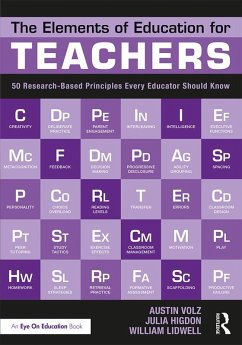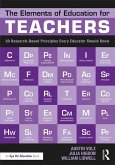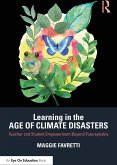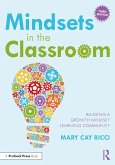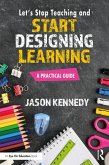Austin Volz, Julia Higdon, William Lidwell
The Elements of Education for Teachers (eBook, ePUB)
50 Research-Based Principles Every Educator Should Know
30,95 €
30,95 €
inkl. MwSt.
Sofort per Download lieferbar

15 °P sammeln
30,95 €
Als Download kaufen

30,95 €
inkl. MwSt.
Sofort per Download lieferbar

15 °P sammeln
Jetzt verschenken
Alle Infos zum eBook verschenken
30,95 €
inkl. MwSt.
Sofort per Download lieferbar
Alle Infos zum eBook verschenken

15 °P sammeln
Austin Volz, Julia Higdon, William Lidwell
The Elements of Education for Teachers (eBook, ePUB)
50 Research-Based Principles Every Educator Should Know
- Format: ePub
- Merkliste
- Auf die Merkliste
- Bewerten Bewerten
- Teilen
- Produkt teilen
- Produkterinnerung
- Produkterinnerung

Bitte loggen Sie sich zunächst in Ihr Kundenkonto ein oder registrieren Sie sich bei
bücher.de, um das eBook-Abo tolino select nutzen zu können.
Hier können Sie sich einloggen
Hier können Sie sich einloggen
Sie sind bereits eingeloggt. Klicken Sie auf 2. tolino select Abo, um fortzufahren.

Bitte loggen Sie sich zunächst in Ihr Kundenkonto ein oder registrieren Sie sich bei bücher.de, um das eBook-Abo tolino select nutzen zu können.
Designed for clarity and ease of use, this book is perfect for both new and experienced educators. The authors have surveyed the research literature and carefully curated 50 elements of effective teaching to answer questions and demystify the secrets of master teachers.
- Geräte: eReader
- mit Kopierschutz
- eBook Hilfe
- Größe: 0.98MB
Andere Kunden interessierten sich auch für
![The Elements of Education for Teachers (eBook, PDF) The Elements of Education for Teachers (eBook, PDF)]() Austin VolzThe Elements of Education for Teachers (eBook, PDF)30,95 €
Austin VolzThe Elements of Education for Teachers (eBook, PDF)30,95 €![Teaching with a Strength-Based Approach (eBook, ePUB) Teaching with a Strength-Based Approach (eBook, ePUB)]() Steven BaronTeaching with a Strength-Based Approach (eBook, ePUB)26,95 €
Steven BaronTeaching with a Strength-Based Approach (eBook, ePUB)26,95 €![Empowering Students for the Future (eBook, ePUB) Empowering Students for the Future (eBook, ePUB)]() Eric YuhaszEmpowering Students for the Future (eBook, ePUB)26,95 €
Eric YuhaszEmpowering Students for the Future (eBook, ePUB)26,95 €![Learning in the Age of Climate Disasters (eBook, ePUB) Learning in the Age of Climate Disasters (eBook, ePUB)]() Maggie FavrettiLearning in the Age of Climate Disasters (eBook, ePUB)28,95 €
Maggie FavrettiLearning in the Age of Climate Disasters (eBook, ePUB)28,95 €![Mindsets in the Classroom (eBook, ePUB) Mindsets in the Classroom (eBook, ePUB)]() Mary Cay RicciMindsets in the Classroom (eBook, ePUB)19,95 €
Mary Cay RicciMindsets in the Classroom (eBook, ePUB)19,95 €![Let's Stop Teaching and Start Designing Learning (eBook, ePUB) Let's Stop Teaching and Start Designing Learning (eBook, ePUB)]() Jason KennedyLet's Stop Teaching and Start Designing Learning (eBook, ePUB)26,95 €
Jason KennedyLet's Stop Teaching and Start Designing Learning (eBook, ePUB)26,95 €![From Ghosts to Graduates (eBook, ePUB) From Ghosts to Graduates (eBook, ePUB)]() Emily FreelandFrom Ghosts to Graduates (eBook, ePUB)28,95 €
Emily FreelandFrom Ghosts to Graduates (eBook, ePUB)28,95 €-
-
-
Designed for clarity and ease of use, this book is perfect for both new and experienced educators. The authors have surveyed the research literature and carefully curated 50 elements of effective teaching to answer questions and demystify the secrets of master teachers.
Dieser Download kann aus rechtlichen Gründen nur mit Rechnungsadresse in A, B, BG, CY, CZ, D, DK, EW, E, FIN, F, GR, HR, H, IRL, I, LT, L, LR, M, NL, PL, P, R, S, SLO, SK ausgeliefert werden.
Produktdetails
- Produktdetails
- Verlag: Taylor & Francis eBooks
- Seitenzahl: 114
- Erscheinungstermin: 10. April 2019
- Englisch
- ISBN-13: 9781351587792
- Artikelnr.: 56840402
- Verlag: Taylor & Francis eBooks
- Seitenzahl: 114
- Erscheinungstermin: 10. April 2019
- Englisch
- ISBN-13: 9781351587792
- Artikelnr.: 56840402
- Herstellerkennzeichnung Die Herstellerinformationen sind derzeit nicht verfügbar.
Austin Volz is Senior Learner-Experience Designer on the "Tiger Works" Research and Development team at Avenues: The World School. A recipient of both a Fulbright scholarship and Foreign Language and Area Studies Fellowship, Austin holds a bachelor's from St. John's College and a master's from the Harvard Graduate School of Education.
Julia Higdon is Senior Research Scientist on the "Tiger Works" Research and Development team at Avenues: The World School. Julia began her career as a teacher and holds a doctorate in education research from the Harvard Graduate School of Education.
William Lidwell is Vice President of the "Tiger Works" Research and Development team at Avenues: The World School. He is the author of several books, including the best-selling Universal Principles of Design.
Julia Higdon is Senior Research Scientist on the "Tiger Works" Research and Development team at Avenues: The World School. Julia began her career as a teacher and holds a doctorate in education research from the Harvard Graduate School of Education.
William Lidwell is Vice President of the "Tiger Works" Research and Development team at Avenues: The World School. He is the author of several books, including the best-selling Universal Principles of Design.
1. 80/20 Rule 2. Ability Grouping 3. Assessment, Formative 4. Assessment,
Self 5. Assessment, Summative 6. Choice Overload 7. Chunking 8. Classroom
Design 9. Classroom Management 10. Creativity 11. Decision Making 12.
Deliberate Practice 13. Depth of Processing 14. Direct Instruction 15.
Discussion-Based Learning 16. Dual Coding 17. Engagement, Parent 18.
Engagement, Student 19. Errors 20. Executive Functions 21. Exercise Effects
22. Expectation Effects 23. Feedback 24. Flexibility Tradeoffs 25. Homework
26. Intelligence 27. Interleaving 28. Metacognition 29. Mnemonic Devices
30. Motivation 31. Peer Tutoring 32. Performance Load 33. Personality 34.
Play 35. Productive Failure 36. Progressive Disclosure 37. Project-Based
Learning 38. Reading Levels 39. Retrieval Practice 40. Scaffolding 41.
Serial Position Effects 42. Sleep Strategies 43. Social-Emotional Learning
44. Spacing 45. Student-Directed Learning 46. Student-Teacher Relationship
47. Study Tactics 48. Teach-to-Learn 49. Technology-Based Instruction 50.
Transfer
Self 5. Assessment, Summative 6. Choice Overload 7. Chunking 8. Classroom
Design 9. Classroom Management 10. Creativity 11. Decision Making 12.
Deliberate Practice 13. Depth of Processing 14. Direct Instruction 15.
Discussion-Based Learning 16. Dual Coding 17. Engagement, Parent 18.
Engagement, Student 19. Errors 20. Executive Functions 21. Exercise Effects
22. Expectation Effects 23. Feedback 24. Flexibility Tradeoffs 25. Homework
26. Intelligence 27. Interleaving 28. Metacognition 29. Mnemonic Devices
30. Motivation 31. Peer Tutoring 32. Performance Load 33. Personality 34.
Play 35. Productive Failure 36. Progressive Disclosure 37. Project-Based
Learning 38. Reading Levels 39. Retrieval Practice 40. Scaffolding 41.
Serial Position Effects 42. Sleep Strategies 43. Social-Emotional Learning
44. Spacing 45. Student-Directed Learning 46. Student-Teacher Relationship
47. Study Tactics 48. Teach-to-Learn 49. Technology-Based Instruction 50.
Transfer
1. 80/20 Rule 2. Ability Grouping 3. Assessment, Formative 4. Assessment, Self 5. Assessment, Summative 6. Choice Overload 7. Chunking 8. Classroom Design 9. Classroom Management 10. Creativity 11. Decision Making 12. Deliberate Practice 13. Depth of Processing 14. Direct Instruction 15. Discussion-Based Learning 16. Dual Coding 17. Engagement, Parent 18. Engagement, Student 19. Errors 20. Executive Functions 21. Exercise Effects 22. Expectation Effects 23. Feedback 24. Flexibility Tradeoffs 25. Homework 26. Intelligence 27. Interleaving 28. Metacognition 29. Mnemonic Devices 30. Motivation 31. Peer Tutoring 32. Performance Load 33. Personality 34. Play 35. Productive Failure 36. Progressive Disclosure 37. Project-Based Learning 38. Reading Levels 39. Retrieval Practice 40. Scaffolding 41. Serial Position Effects 42. Sleep Strategies 43. Social-Emotional Learning 44. Spacing 45. Student-Directed Learning 46. Student-Teacher Relationship 47. Study Tactics 48. Teach-to-Learn 49. Technology-Based Instruction 50. Transfer
1. 80/20 Rule 2. Ability Grouping 3. Assessment, Formative 4. Assessment,
Self 5. Assessment, Summative 6. Choice Overload 7. Chunking 8. Classroom
Design 9. Classroom Management 10. Creativity 11. Decision Making 12.
Deliberate Practice 13. Depth of Processing 14. Direct Instruction 15.
Discussion-Based Learning 16. Dual Coding 17. Engagement, Parent 18.
Engagement, Student 19. Errors 20. Executive Functions 21. Exercise Effects
22. Expectation Effects 23. Feedback 24. Flexibility Tradeoffs 25. Homework
26. Intelligence 27. Interleaving 28. Metacognition 29. Mnemonic Devices
30. Motivation 31. Peer Tutoring 32. Performance Load 33. Personality 34.
Play 35. Productive Failure 36. Progressive Disclosure 37. Project-Based
Learning 38. Reading Levels 39. Retrieval Practice 40. Scaffolding 41.
Serial Position Effects 42. Sleep Strategies 43. Social-Emotional Learning
44. Spacing 45. Student-Directed Learning 46. Student-Teacher Relationship
47. Study Tactics 48. Teach-to-Learn 49. Technology-Based Instruction 50.
Transfer
Self 5. Assessment, Summative 6. Choice Overload 7. Chunking 8. Classroom
Design 9. Classroom Management 10. Creativity 11. Decision Making 12.
Deliberate Practice 13. Depth of Processing 14. Direct Instruction 15.
Discussion-Based Learning 16. Dual Coding 17. Engagement, Parent 18.
Engagement, Student 19. Errors 20. Executive Functions 21. Exercise Effects
22. Expectation Effects 23. Feedback 24. Flexibility Tradeoffs 25. Homework
26. Intelligence 27. Interleaving 28. Metacognition 29. Mnemonic Devices
30. Motivation 31. Peer Tutoring 32. Performance Load 33. Personality 34.
Play 35. Productive Failure 36. Progressive Disclosure 37. Project-Based
Learning 38. Reading Levels 39. Retrieval Practice 40. Scaffolding 41.
Serial Position Effects 42. Sleep Strategies 43. Social-Emotional Learning
44. Spacing 45. Student-Directed Learning 46. Student-Teacher Relationship
47. Study Tactics 48. Teach-to-Learn 49. Technology-Based Instruction 50.
Transfer
1. 80/20 Rule 2. Ability Grouping 3. Assessment, Formative 4. Assessment, Self 5. Assessment, Summative 6. Choice Overload 7. Chunking 8. Classroom Design 9. Classroom Management 10. Creativity 11. Decision Making 12. Deliberate Practice 13. Depth of Processing 14. Direct Instruction 15. Discussion-Based Learning 16. Dual Coding 17. Engagement, Parent 18. Engagement, Student 19. Errors 20. Executive Functions 21. Exercise Effects 22. Expectation Effects 23. Feedback 24. Flexibility Tradeoffs 25. Homework 26. Intelligence 27. Interleaving 28. Metacognition 29. Mnemonic Devices 30. Motivation 31. Peer Tutoring 32. Performance Load 33. Personality 34. Play 35. Productive Failure 36. Progressive Disclosure 37. Project-Based Learning 38. Reading Levels 39. Retrieval Practice 40. Scaffolding 41. Serial Position Effects 42. Sleep Strategies 43. Social-Emotional Learning 44. Spacing 45. Student-Directed Learning 46. Student-Teacher Relationship 47. Study Tactics 48. Teach-to-Learn 49. Technology-Based Instruction 50. Transfer
